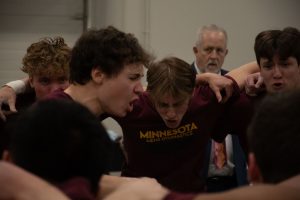In their Oct. 13, 2009 editorial, The Minnesota Daily Editorial Board raised some legitimate points about the University of MinnesotaâÄôs 2010 capital request for Higher Education Asset Preservation and Replacement (HEAPR) funds. However, the editorialâÄôs main assertion that the HEAPR project list is poorly defined is wrong. State law actually requires the University to submit a detailed list of projects as part of its capital request. In creating the 2010 HEAPR list, University administrators use the Facilities Condition Assessment (FCA) âÄî a database that captures a comprehensive evaluation of the condition of all University facilities, on all campuses, prioritized by need. In addition to the FCA database, the University considers code compliance, fire-life-safety and disability needs, academic programming and the opportunity to leverage other funding when creating the HEAPR request. For example, a faculty memberâÄôs research award may include the use of some grant funds for capital improvements, therefore increasing a projectâÄôs ranking. The HEAPR list may be re-prioritized several times throughout the year because of certain events âÄî a windstorm that destroys part of a roof, a water pipe that bursts or any other unanticipated emergency repair need. This flexibility reflects the operational realities faced by the University in effectively managing more than 16 million assignable square feet in more than 800 buildings. Since the University created the FCA, the University has been increasing the funds requested for HEAPR projects. The $100 million requested for HEAPR in 2010 is not arbitrary; there are needs well in excess of $100 million. As the editorial points out, the University received $35 million of the requested $100 million in HEAPR funds in 2008. The legislature has to balance the UniversityâÄôs request with all other requests. In this last biennium, from local governments to all state agencies, approximately $2 billion in projects was requested but the stateâÄôs total bonding bill was only a little over $700 million. The University also received $25 million in HEAPR funds in 2009 âÄî thatâÄôs $60 million for the biennium. Other projects in the capital request address facility needs such as Folwell Hall, a century-old historic building essential to the UniversityâÄôs educational mission, that would otherwise require a substantial HEAPR investment. In addition to providing the state with a detailed HEAPR request, the University annually reports to the legislature on the completion of HEAPR projects. The HEAPR dollars that the University receives are wisely used to protect the UniversityâÄôs assets and to provide a safe environment. Rather than âÄúopaqueness and generality,âÄù the University takes very seriously its stewardship responsibility and provides the level of detail that decision-makers need to thoughtfully consider the UniversityâÄôs request. Kathleen OâÄôBrien University Services vice president Please send comments to [email protected].








